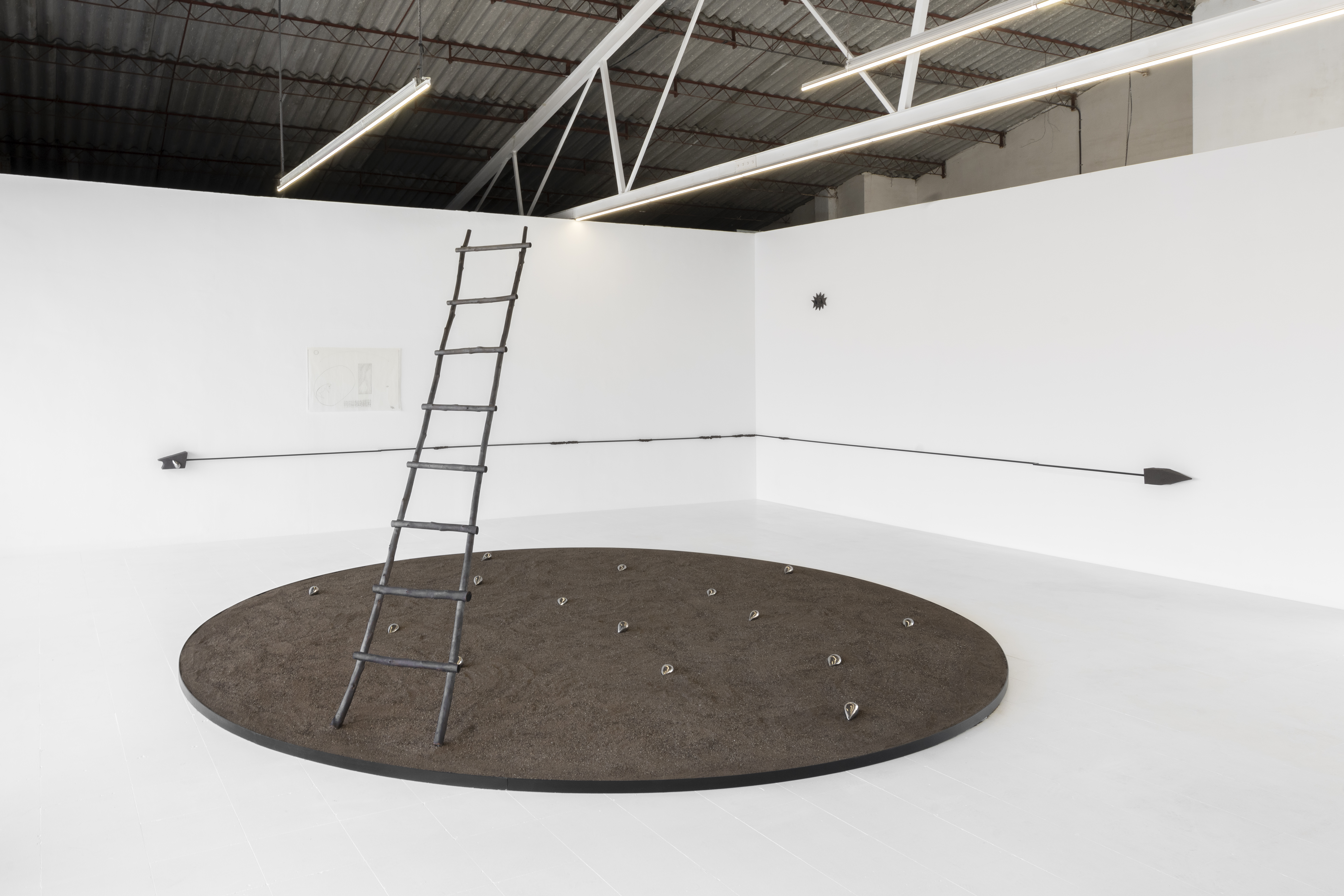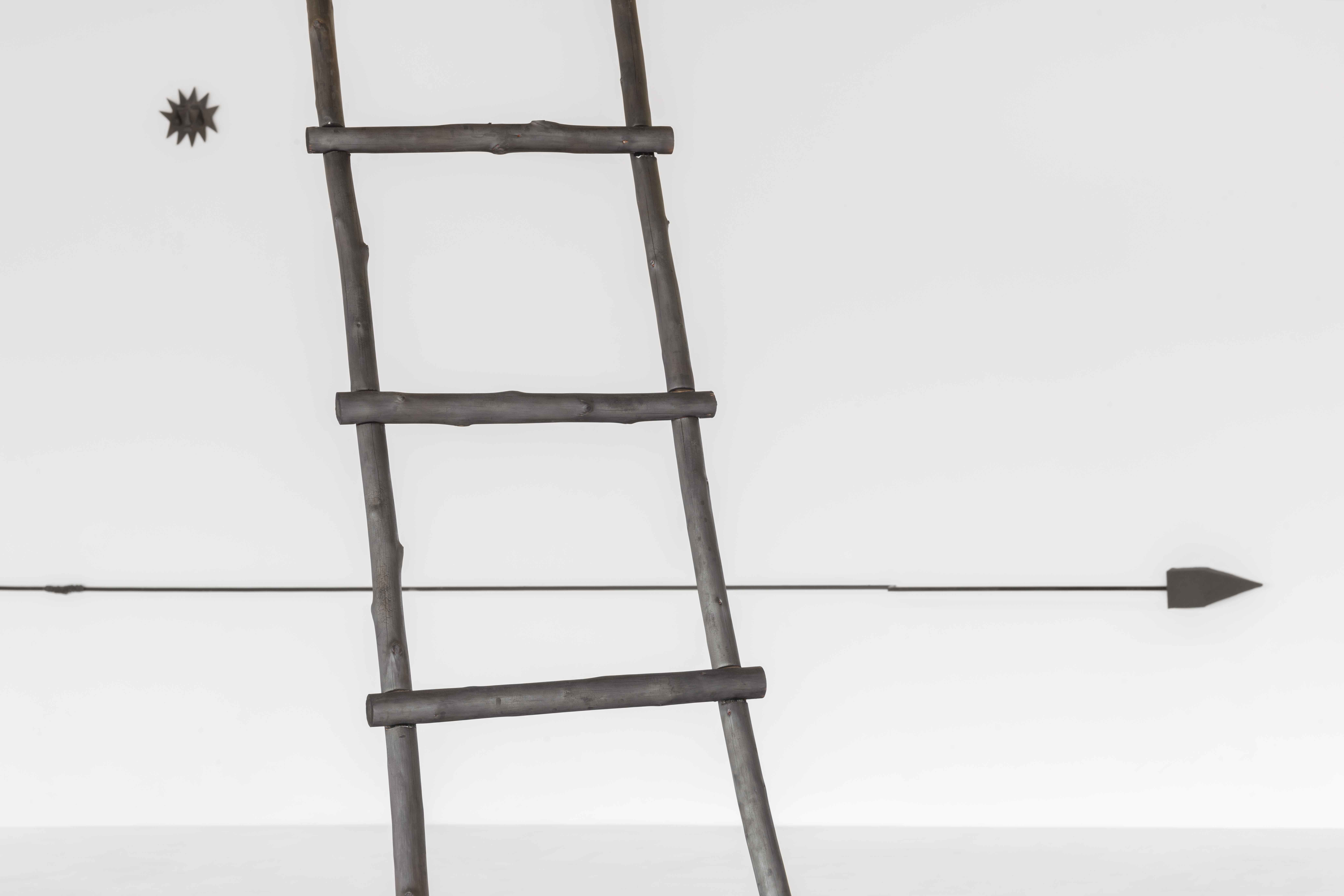SPRING 2024

The sun is crying. It tries with its tears to make up for the rain that does not come.
The water that is missing and that we need. Because of the drought, because of the mismanagement of resources.
Florencia Sadir tells us that where she lives, in the north of Argentina, several industries have been located near the main riverbed and water has been scarce for more than a decade. The Maldición del Río Seco (Curse of the Dry River), a colonial legend from the same area, tells that a mestizo stole the chalice from the church of San Carlos and buried it in the river. The parish priest cursed him and since then it has never carried water again.
Mudar el rumbo (Changing Course) generates an enchantment in which ancestral knowledge intersects with political and situated thinking. It constitutes an offering in an attempt to restore the wounded memory of the world and to get out of the human centrality that silences other presences. The water snake is a feminine principle, claiming its place. It is a river pulse. An animal of power, of transformation and rebirth. This is how we see it in its head, with features engraved almost like a non-Western script, like the lines of a braid. Kind but dark. Robust. The tears of the sun become into beautiful drops of buried silver, a mineral inseparable from a history of exploitation and subjugation.The installation constructs an open narrative with various characters that are forms of life, liquid bodies that demand a balance. A set of subtle elements,fluctuating between abstraction and tenderness. A tenderness that navigates as best it can through colonial violence, precariousness and resistance.
Let us listen to the voice of the rivers, for they speak.
Let us be water, in matter and spirit, in our mobility
and our capacity to change course,
or we will be lost.
The water that is missing and that we need. Because of the drought, because of the mismanagement of resources.
Florencia Sadir tells us that where she lives, in the north of Argentina, several industries have been located near the main riverbed and water has been scarce for more than a decade. The Maldición del Río Seco (Curse of the Dry River), a colonial legend from the same area, tells that a mestizo stole the chalice from the church of San Carlos and buried it in the river. The parish priest cursed him and since then it has never carried water again.
Mudar el rumbo (Changing Course) generates an enchantment in which ancestral knowledge intersects with political and situated thinking. It constitutes an offering in an attempt to restore the wounded memory of the world and to get out of the human centrality that silences other presences. The water snake is a feminine principle, claiming its place. It is a river pulse. An animal of power, of transformation and rebirth. This is how we see it in its head, with features engraved almost like a non-Western script, like the lines of a braid. Kind but dark. Robust. The tears of the sun become into beautiful drops of buried silver, a mineral inseparable from a history of exploitation and subjugation.The installation constructs an open narrative with various characters that are forms of life, liquid bodies that demand a balance. A set of subtle elements,fluctuating between abstraction and tenderness. A tenderness that navigates as best it can through colonial violence, precariousness and resistance.
Let us listen to the voice of the rivers, for they speak.
Let us be water, in matter and spirit, in our mobility
and our capacity to change course,
or we will be lost.
Sadir works with temporalities linked to natural cycles, territory and listening. A way to avoid the one-way line of progress in order to return to a time where our identities merge with those of other living beings. An attempt to approach the ancestral future proposed by philosopher and activist Ailton Krenak. Her way of doing goes with the place where she lives, in a dry and scarce soil. In the brickyard of San Carlos, where her sculptural work is nourished from, horses work the clay in circles for hours, so that then it is baked with fire and let dry in the sun. It is the air, the smoke and the wind that finish the process of waiting, strength and patience. This “mutual nurturing”, in the words of the artist and weaver Elvira Espejo Ayca, is fundamental for everything to be in balance.
It is difficult to find two bricks alike, and that is part of their beauty. In previous works, Florencia has used them to engrave figurative motifs that represent everyday procedures: horses, crops, houses, the sun and the moon. This gesture of fixing and imprinting in stone and clay is highly symbolic and powerful. It is a way of reclaiming and recovering the memory and spirit of the original peoples and the people who live there. To propose a way of transiting time and the world with more connection and care.
When we arrive on earth,
we descend like birds,
that perch silently,
and one day we set off on a journey to the sky,
without leaving any marks.
It is difficult to find two bricks alike, and that is part of their beauty. In previous works, Florencia has used them to engrave figurative motifs that represent everyday procedures: horses, crops, houses, the sun and the moon. This gesture of fixing and imprinting in stone and clay is highly symbolic and powerful. It is a way of reclaiming and recovering the memory and spirit of the original peoples and the people who live there. To propose a way of transiting time and the world with more connection and care.
When we arrive on earth,
we descend like birds,
that perch silently,
and one day we set off on a journey to the sky,
without leaving any marks.
Text: Rosa Lleó.











